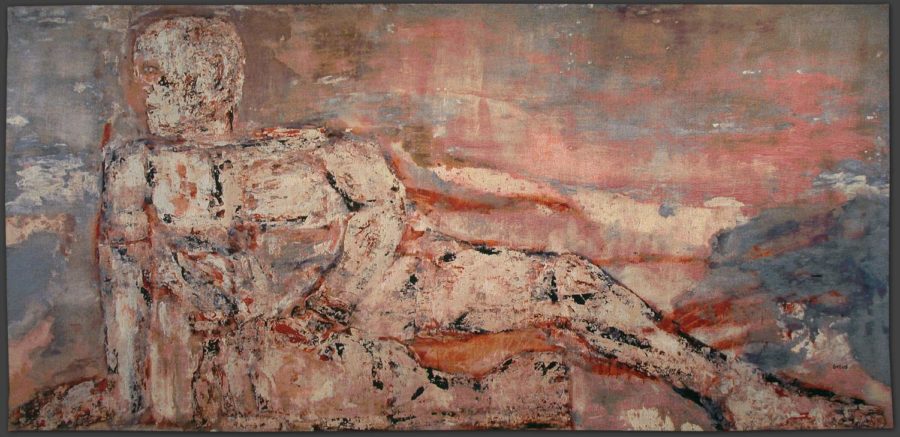Despite the wealth and range of works collected in the Smart Museum’s new show, “Monster Roster: Existentialist Art in Postwar Chicago,” a feeling of the unfinished permeates the exhibition. The show, which opened last Thursday and runs until June, features one of the most prominent groups of postwar Chicago Imagists, also known as the Monster Roster. The curation, conducted by the Smart’s own Jessica Moss and Richard A. Born along with two independent gallery owners, excels in providing background, context, and a sense of stakes for the art.
Somehow, the section of the show that seems most complete is the one displaying the artists’ rich and various sources of aesthetic and ideological inspiration: pre-Columbian Peruvian vessels, masks from 20th-century New Guinea and West Africa, Käthe Kollwitz etchings at their most morbid and manneristic (Death and the Woman [Tod und Frau] (1910)), equal parts sex and death in the work of Otto Dix (Shot to Pieces [Zerschossene] (1924)) and Nude [Halb Akt] (1923)). The standout presence in this section is Jean Dubuffet, whose innovation in just a few small pen-and-ink pieces and a mixed media “painting” outshines several of the Roster artists apparently inspired by his work.
That said, visitors to the exhibition can expect to enjoy some of the most impressive blossoms of the postwar Monster Roster spring. Fred Berger’s Untitled (1958) and The Tribe (1959) steal the show and command even more attention than they might otherwise have received had it not been for the scattered patchwork of experimental styles that fill the show. Some of the best possibilities for the Roster kind of experimentation come out through the repetition and honing seen in series like Cosmo Campoli’s three versions of the Birth of Death sculpture (c. 1950, 1950–51, 1950), cleverly displayed from several angles.
It is also found in Dominick Di Meo’s playing with repeated motifs in Female Figure / Phallus (1961–63), Woman (1961–63), and his “torsoscapes” (all 1962). But for the same reason that this open-ended artistic process on display excites, it denies the viewer an experience of these artists’ works as polished final drafts, so to speak, which one expects at these kinds of retrospectives. Still, June Leaf and Evelyn Statsinger emphasize the contrast through their fully accomplished works, particularly Leaf’s The Vermeer Box (1965) and The Salon (1965) and Statsinger’s Tyranny of the Half Remembered (c. 1950).
This unfinished quality stands out most in the curious choice of exhibited works from the Monster Roster’s infamous power couple. Those familiar with the work of wife-and-husband pair Nancy Spero and Leon Golub may be surprised to find the pieces here limited to a handful of the couple’s most significant early works. Lovers of Spero’s trippy, feminist primitivism and delicately posed figures suspended in crushing empty space may find little recognizable of the artist, even in such restlessly haunting pieces as her Nightmare Figure series. Reclining Youth (1959) may represent the apex of Golub’s mythologically-informed soft-focus style in the late ’50s, but it was produced before Golub and Spero relocated to Europe. It came before Golub’s great works on Vietnam, Nicaragua, global terror, and state oppression. It leaves the visitor with an experience of Golub as a still-developing dabbler in vague classical themes and hazy, archetypal figures, rather than as an intensely specific and political artist engaged in contemporary conflict through sharp, visual detail.
Of course, that all came after Golub’s and Spero’s groundbreaking time in Chicago, which was arguably the only moment in time where it makes art-historical sense to speak of the Monster Roster as anything like a distinct group. But if you know the full story of these artists’ careers, you may be disappointed to find in this exhibition neither the figurative sophistication Spero made her trademark nor the full monumental grotesquerie that characterizes Golub’s most famous monsters.
Monster Roster is on display now until June 12.










